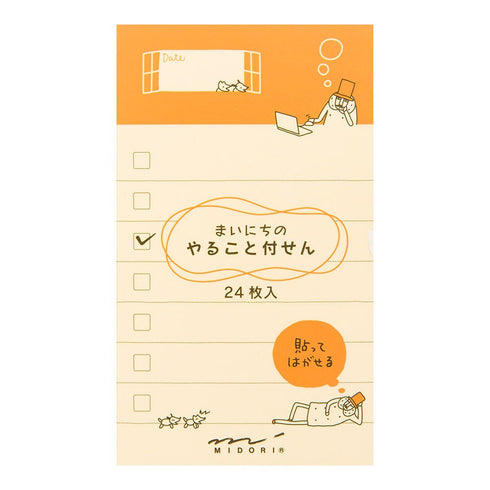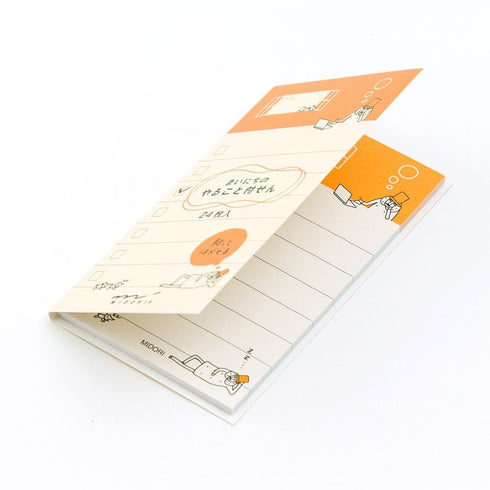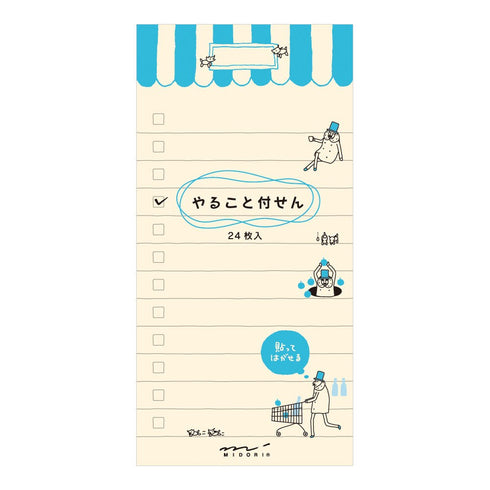By purchasing the item in this listing, you agree that you have read the entire item description and that you have viewed all the images on the listing. Also, you agree that what you've chosen in the drop-down menu is exactly what you have ordered. There are no guarantees on delivery times for orders. I ship within 24 hours but have no control over the speed of delivery with any carrier.
________________________________
A very useful sticky note for writing things to do for the day, shopping lists, and many other situations. The fun illustrations that support what you need to do will motivate you to do it! You will be hooked by the sense of accomplishment you get when you check off the items you have completed. The large size is easy to use at home or in the office, with plenty of space for writing. The adhesive on the left side of the sticky note allows you to stick it firmly.
The "ojisan" character is a popular figure in Japanese culture that typically refers to a middle-aged or older man, often depicted as slightly overweight, balding, and with a mustache. This character has a long history in Japan and has evolved over time.
One of the earliest examples of the ojisan character in Japanese culture is the "otoko-gumi" (male group) of the Edo period (1603-1868). These groups were composed of middle-aged or older men who would gather to socialize and engage in activities such as drinking, gambling, and storytelling. They were often depicted in art and literature as a group of jovial, slightly rowdy men who enjoyed each other's company.
In the early 20th century, the ojisan character began to take on a more individualistic and comedic tone. In the world of rakugo, a form of traditional Japanese comedic storytelling, ojisan characters were often used as the central figures in humorous tales. This style of humor became very popular and was eventually adapted into other forms of Japanese entertainment, such as manga, anime, and television shows.
During the 1970s and 1980s, the ojisan character became even more popular as a symbol of Japanese salarymen, or office workers. These men were often portrayed as overworked and underappreciated, but also as stoic and dedicated to their jobs. This image of the ojisan character was popularized in manga and anime such as "Salaryman Kintaro" and "OL Kozu-san".
Today, the ojisan character is a ubiquitous figure in Japanese popular culture, often used to represent various facets of middle-aged and older Japanese society. Whether he is a salaryman, a retiree, or a nostalgic reminder of the past, the ojisan character remains a beloved and enduring part of Japanese culture.
________________________________
SPECIFICATIONS:
CONTENTS - 24 SHEETS
SMALL (PACKAGE SIZE): H128XW66XD4MM
LARGE (PACKAGE SIZE) H178XW81XD4MM
______________________________________________
Thank you!
By purchasing this item, you agree to abide by my terms and conditions, which can be found on my website. Come and visit my website! thestationerymanor dot com.























